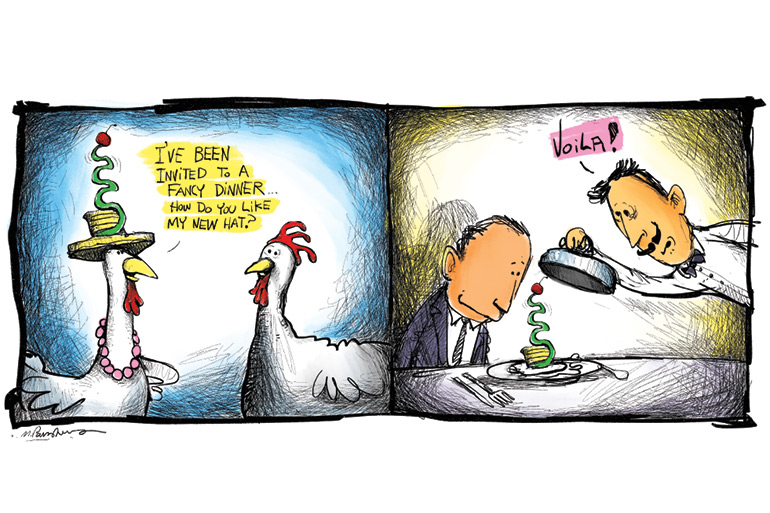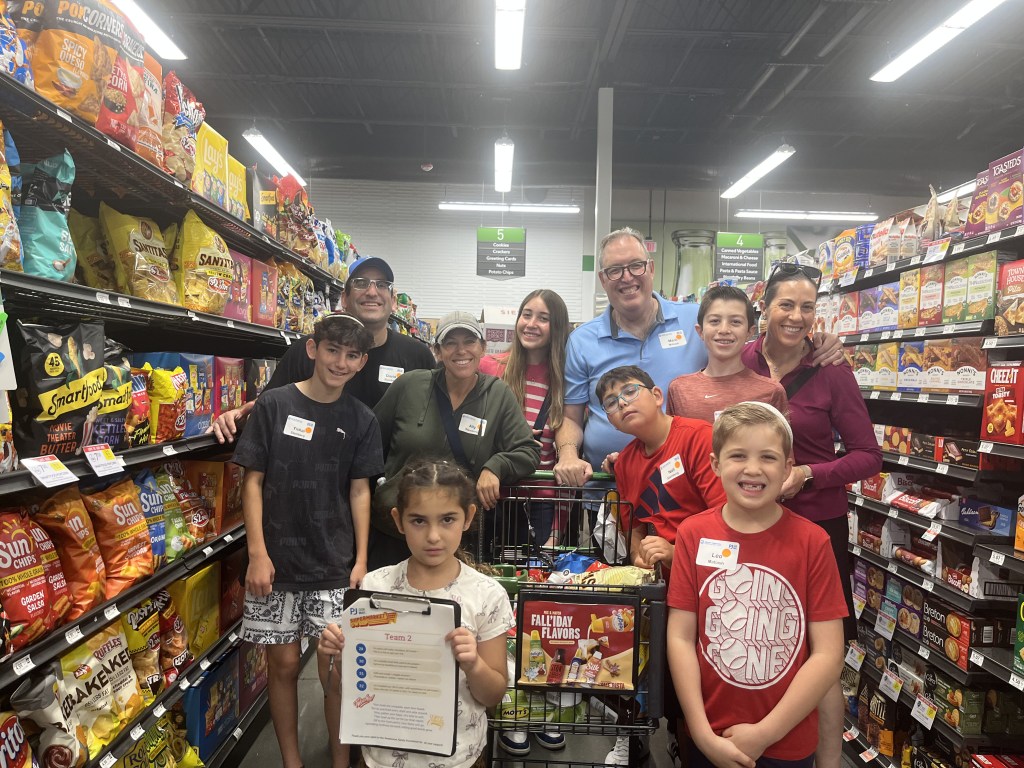Eating in the Hamptons: From Camaraderie and Alcohol (1958) to Food as Art (2018)

This year in the Hamptons, for the first time, there are two high-end restaurants so exclusive that you can’t make reservation the regular way, by phone. It has to be done online. And when you make a reservation, you have to set down a $50 per person deposit. You have to set up an account and enter a password. Finally, they only accept American Express Platinum credit cards—no other credit cards, not even lesser American Express cards. If you don’t have that platinum card (annual fee smacks you out of $550 a year), forget it. And you can’t use cash. Even then, things can go wrong—which they did for me recently—and you can show up on time but get turned away and get nothing to eat.
I yearn for the day when eating was eating. Today, for these special few, eating is an art. Who knew it would come to this?
One of the two restaurants is EMP Summer House on Pantigo Road in East Hampton. The other is Shuko Beach, which is on Montauk Highway across from Ron Perelman’s estate in Wainscott. (He can walk from his house.)
EMP Summer House came to our community for the first time last year as a summer pop-up of the wildly successful Eleven Madison Park in Manhattan. At the time—this was before things went awry for me this year—I managed to qualify, and as a result, ate there. The food is fabulous. Ask for the Fluke Ceviche with cucumber and lime. I will remember it until the day I die.
Last week, I made another reservation online there and, after typing in my account and password, selected the date for my dinner for two as August 1. But my finger slipped when I did the date and by mistake I accidentally put $100 down on August 2. There was no way to cancel it online. Or, to put it another way, doing so might lose me $100. I decided to write them an email about it. How that turned out I will relate at the end of this story.
As for the other restaurant, I couldn’t find any time online that was possible for me, so I called their marketing division (yes, they have one) and tried to make a reservation through them. An email appeared that I thought was from them, giving us a dinner date on Friday, July 6 at 3:45 p.m.—a particularly early time, but hey, you get what you get—but when my wife and I got to Shuko Beach on the appointed day and time, smacking our lips, we were told by a maître d’ there must be some kind of mistake as we weren’t on the list. I asked him to look again. He did, but when he looked up at me again it was with an icy stare. Was I trying to pull something over on them? He nodded at the door.
We had skipped lunch to enjoy this—we’d already heard about their terrific spicy seafood dish with shrimp, lobster, peppers, tofu and scallions—and so we slunk out disappointed, hungry and feeling guilty. Heading out to our relatively modest car—neither Tesla nor Maserati—my wife said, “Who do I blame? you? Or them?” I told her I did not know. Back home we had peanut butter and jelly.
Ah, how times have changed.

Many years ago, when the locals dominated the scene and there were just a few well-to-do people living in the Hamptons, the locals mostly ate their meals at home. The men were farming and fishing and earning a living and would arrive home hungry for dinner. The wives shopped and cooked. The grownups and kids sat around the kitchen table. The family might go out to eat, but it would be a special treat. It might happen once a week.
We locals were aware, back then, that the well-to-do either had servants who cooked for them at home, or, if not prosperous enough to have servants, went out all dressed up every night to high-priced restaurants. After all, they could afford it. And they were, for the most part, summer people on vacation. No sense slaving over a hot stove.
Local restaurants at lower prices for the residents in those days included Chinese restaurants, Italian restaurants, American restaurants, and that was about it. (There was, and still is, a fine German restaurant
in Southampton the locals frequent: Shippy’s.)
The restaurants we ate at had an owner on the premises who greeted you. They were like friends of the family. Often, they were also the cooks. But food was not the issue. It was the camaraderie that mattered. Locals would eat at Sam’s in East Hampton, Il Capuccino in Sag Harbor, the Driver’s Seat in Southampton, Michael’s in Springs.
As for the affluent, although their restaurants were fewer than the local’s restaurants, it wasn’t really about the food. It was about the alcohol. They would go to Dick Ridgely’s in Water Mill, the Stage Door in Sagaponack, Herb McCarthy’s in Southampton, the American Hotel in Sag Harbor, the Patio in Westhampton Beach, the Spring Close House or Villa D’Or in East Hampton.
I recall a favorite of the rich in those days was Gordon’s in Amagansett, where you couldn’t get in unless you wore a jacket and tie. Many drinks preceded dinner at these places. And if the Hedges in East Hampton (the inn by Town Pond) had the celebrated French chef Henri Soule in the kitchen, well, the menu was outrageous, expensive and worth it. But it was still about the alcohol. Elsewhere, the well-to-do would go out to eat and have a martini and a nice steak, Chicago style. Or some swordfish, broiled or baked. Or maybe lobster or duck. A special treat, usually as an appetizer, was caviar. With crackers and Scotch—neat, of course.
Today the situation as regards eating is the reverse from what it was. Locals are in the minority, while the affluent have come into the majority. And it’s topsy-turvy in so many other ways as well.
Consider these reversals. For the well-to-do, drinks are not the issue anymore. It’s the food. It is not unusual to see a prosperous person taking a picture of the dinner being served him or her at a fine restaurant. Food is right up there, titillating the senses. It rivals sex. Drinks? Just wine with dinner.
Owners out front? Almost never. Today the chefs at well-to-do restaurants are rock stars with six- (maybe seven-) figure incomes. The tastes of the concoctions they prepare are designed to be remembered for the rest of your life, not only in your taste buds but in the arrangement in which they appear on your plate.
Sometimes, the chefs themselves are the owners, though busy in the back. The restaurant front is hosted by managers and attractive young people. Often, corporations own restaurants.
Getting a table? Until this new wrinkle, to eat out, the well-to-do would book by phone or online many days in advance if they know what’s good for them. At home? Their kitchens often have expensive appliances from, for example, Switzerland, and are very complicated, sometimes with instructions in French or Italian. Indeed, in some homes, there is fear among the well-to-do on a Friday night, when everyone has neglected to get a reservation, that they might starve. Conversation stops. Attempts are made to call another restaurant, and when that fails, they try a second, third and fourth. This could mean crackers and cheese for dinner. That would be it. At least there’s orange juice, cereal and milk for breakfast. They just have to hold out till morning.
Of course, today there are foodies everywhere, among both the affluent and the locals. They get the freshest, most organic and most interesting local fare imaginable to cook at home—and don’t overcook the vegetables, it kills the vitamins. Foodies are happy, proud people, celebrating the environment, the local bounty and cuisines with recipes from cookbooks written by nationally known celebrity food writers and chefs who also, as it turns out, are largely living in our community.
Also, these days, Dan’s Hamptons Media, which used to be just Dan’s Papers and a website, not only continues to offer these things but now hosts six food events this summer, attended by hundreds, even thousands of people—under huge white tents when that is the case—who come only because they know they will be treated to the spectacular creations of as many as 40 upscale restaurant chefs, all of whom have booths and serving tables. Pay one price, perhaps $295 a person, and eat what you want and drink what you want—the beverages, more than 20 types of wine and spirits and cocktails—all included after buying your entry ticket. Take your time. You can take nearly four hours to eat. Go to DansTaste.com for details.
Anything like that in the early days? Well, two or three times a summer we’d have a chili competition or a clam chowder competition. Locals would make the chili. The restaurants would enter the clam chowder. There’d be prizes.
For me, the most dramatic change in a restaurant location in the Hamptons is at what is now Nick & Toni’s on North Main Street in East Hampton.
Back in the old days, this was an Italian restaurant by the name of Ma Bergman’s. Her husband ran the front, her kids were the waitresses and waiters, and she cooked in the back, occasionally coming out to ask how our family liked the spaghetti and meatballs or the chicken Parmigiana we had ordered. They were great, we’d tell her. The Parmesan would flow freely, and if the place was crowded she’d kick one of her teenagers out from where he was sitting at a table doing his homework and send him upstairs to do it there.
Today it is still an Italian restaurant, but a top-rated establishment featuring the cuisine of Tuscany. When you are seated, you get hot crusty bread and olives and perhaps a chef’s amuse-bouche as a gift for coming. Everybody goes there to see and be seen and to have a really excellent dinner.
Nick & Toni’s does not list itself on Open Table, however. And when you call for reservations, a voice tells you they only take them after 1 p.m. So call back then. Same day is unlikely. But next Thursday is possible. Might we be going hungry tonight?
I am happy to report that EMP Summer House, by email, transferred my reservation due to my pressing the wrong key on my computer from August 2 to August 1. It was a special kindness. And no fee, as you might get when you change your plane reservations.
A memory. When the Stage Door closed (today it is Townline BBQ), it was, for a long time, a restaurant called Bruce’s, with a wonderful chef and high-end menu.
One night, toward the end of our meal, I excused myself to go to the men’s room. For my entire life up until this moment, I had never gone to a bathroom in a restaurant that had women in it. They had their own bathrooms. And that was the case here as well.
For this reason, what happened in that bathroom for me was a traumatic experience. I started doing what I had to do, when, quite suddenly the booming voice of Julia Child filled the men’s room. You recall, she had this distinctive, overbearing voice, often touched with puzzlement or amusement. She was speaking directly to me there, sitting in that stall—there was nobody else in that bathroom—all about the preparation of Brussels sprouts and how one chops them and what sort of oil is preferred and what spices might go with it. I thought for one brief moment she was actually in there. Indeed, when I hurried out of the stall to wash my hands, I looked around. Her voice was coming over a loudspeaker high overhead. The world had not gone crazy.
Well, that was BEFORE.









